Nuremberg, Germany
< Start at the beginning of this series: Grand European River Cruise
Because we felt the need for a little downtime after our walking tour in Regensburg yesterday, we went back to our ship while many others stayed on to see more of the city – or to try their hands at sausage-making during an excursion at the Regensburger Rathskeller. In an effort to save time, our ship left Regensburg and retrieved those folks a little further upriver in Kelheim.
Somewhere between here and there, we passed by an awesome onion-like tower and made friends with two swans (and their cygnets) who were looking for a handout from our shipmates. As soon as they realized there would be no food, they slowly made their way back across the river.
Near Kelheim, our ship went from the not-so-blue Danube into the Main-Danube Canal, where we sailed for a couple more days.
As far back as 1,200 years ago, visionary Frankish Emperor Charlemagne contemplated connecting the Rhine, Main and Danube Rivers so ships could travel the length of Europe. Today, his dream dramatically comes to life as this ingenious 106-mile canal cuts through the rolling hills of north central Bavaria, with an elevation change of 574 feet between Bamberg and its highest point, the Hilpoltstein and Bachhausen locks. The Main-Danube Canal employs 16 stair-step river locks that allow vessels to travel 2,200 miles through 10 countries, from the North Sea coast of Holland to the Black Sea shores of Romania – from our Viking Cruise information
Since yesterday was a pretty easy day, we decided to take advantage of the complimentary transfer to the city center to spend a couple of hours in town before our excursion at 1:30. Tom stayed back but despite the occasional drizzle, Jim and I had a wonderful time in Nuremberg’s Main Market Square, where the vendors were offering just about anything our hearts desired.
Nürnberger Hauptmarkt was filled with vendors offering fresh produce, freshly baked bread, flowers, arts and crafts. All that and people-watching kept us busy for hours! Local specialties, as well as delicious treats from around the world are available. The striped canopies kept everything undercover, and the bustling atmosphere and fabulous buildings surrounding the market made for a great outing.
We ended up with a large bag of huge, beautiful bing cherries. We resisted the gingerbread, but instead followed a familiar smell in the next row of vendors. It was pretty early for lunch, but when in Nuremberg… We ordered up Nuremberg sausages (Nürnberger Rostbratwürstchen) “3 im Weggla” – three small sausages laid in a sliced-open bun (weggla) and topped with mustard – with the optional sauerkraut (and a beer).
It was hard not to notice the beautiful cathedral just beyond the square. We only worshipped this one from afar and weren’t able to go inside. Dedicated to Saint Lawrence, St. Lorenz was badly damaged during WWII and later restored. It is one of the most important Evangelical Lutheran Churches in Bavaria and another work of Gothic art. If you click on the link there are photos of the inside.
The main market is almost completely pedestrian, with the exception of one one-way street. The Schönen Brunnen (Beautiful Fountain) was built at the end of the 14th century and attracts many people with its ornate and gleaming exterior. Just over 62 feet high, it has the shape of a Gothic spire and a latticed fence, probably installed to protect it from vandalism. The main attraction is a gold shimmering ring, which was intended to fulfill wishes when rubbed. The line was quite long for that experience – but of course I waited. We also enjoyed a lively concert by the local volunteer fire brigade – Spielmannszug Erbendorf.
The markets change with the seasons as different produce becomes available. Just before Christmas, the spectacular Weihnachtsmarkt (Christmas Market) offers traditional Christmas gifts and the market is aglow with Christmas lights. I imagine it becomes even more magical when the lights reflect off a snow-dusted square. I wish I could have been there for that! Other times of the year, there are flea markets, as well as the Nuremberg Old Town Festival.
“Expected September 11 – 23, 2019 and exclusive to Nuremberg: Germany’s largest and nicest Old Town Festival! It features more than 60 free-of-charge events, including the traditional fishermen’s joust on the River Pegnitz, a wide variety of folklore programs and many musical events as well as the popular Hans-Sachs-Spiele theatre program.” – READ MORE
When we returned to the square with our tour guide, we got a totally different impression of this lovely square.
The Jewish quarter was centrally located in the city, in the area where we are standing today. In 1349, nearly 600 Jews were killed and their homes and synagogue were destroyed. The marketplace stands where the houses of the Jewish ghetto laid in rubble. And the destroyed synagogue was replaced by the Frauenkirche (Church of Our Lady, pictured below).
In the early 1930s, the Hauptmarkt was used as the central location of Nazi party rallies and for parades, and was renamed “Adolf-Hitler-Platz” on March 25, 1933. The link above has photos and a lot more info if you’re interested. There is one photo with Hitler in the foreground and this church behind, with a crowd of pumped-up people in between, which is quite disturbing.
With such a horrifying past, it’s refreshing that wonderful, positive things now happen in this square every day. And despite its jaded history, this church is quite a site to behold.
Our tour continues with a walk through the city of Nuremberg, with its mix of old and modern. The Tugendbrunnen (Fountain of the Virtues) was built in the late 1580s and represents the seven virtues of the Middle Ages. The second photo shows a fabulous engraving of the city on the exterior of Thomas Sabo, a fine jewelry store.
Many footbridges cross the Pegnitz River in Nuremberg with beautiful landmarks along the way. The Hospital of the Holy Spirit (Heilig-Geist-Spital, pictured top left below) was established in 1332 to care for the elderly and poor. Sometime after 1500, another wing was added over the Pegnitz and it’s really quite beautiful. The link has another lovely photo and more info.
The second photo appears to be a memorial and sums up Nuremberg pretty well with its ancient memorials in the foreground and modern (uninspiring) buildings behind. The buildings in the grouping below had a much more historic look.
The gruesome statue on the right is named “Ship of Fools“. This bronze statue is a grossly undersized boat carrying seven people, a skeleton and a dog, and depicts the end of the world.
More fabulous buildings and ABC comes to mind again. Yes, another bloody (or beautiful) church (or castle).
St. Sebaldus Church (below) is yet another medieval church (but fabulous!). With its beautiful red tiled roof and two greenish steeples, it’s easy to spot from quite a distance. It is one of the oldest, most important churches of the city. There are great photos at the link above.
Once more than 28 miles long, the Berlin Wall separated East from West Germany from 1961 to 1989. This blog tells about some of the creative things that have been done to what little remains of the wall after its fall, telling its story with hopes that history would not repeat itself. Segments are scattered throughout many countries – including the United States. See the link below for where most of the sections are located.
“A segment of the Berlin Wall was installed in the courtyard of the U.S. Embassy Berlin on 13 February 2008, “to serve as a reminder of the past and a symbol of hope for the future”.
On the 20th anniversary of the fall of the Wall in November 2009, two wall segments were set up in front the John F. Kennedy high school building… The [capitalist] “West” side is painted with colorful graffiti whereas the [communist] “East” side is colored historical plain white.” – READ MORE
Jim is standing by a section of the Berlin Wall in the photo below.
We decided well before we arrived in Nuremberg that – although Jim is a huge WWII buff – we wanted to see the city and hear about some of the history, but we didn’t want to get too wrapped up in Hitler. Even though we chose an excursion that didn’t delve too far into it all, the tour took us by some of the sites that most people knew from history and at times it wasn’t easy to see and hear about.
“Nuremberg – the city of the Nazi Party Rallies, the city of the race laws, the city in which trials against those responsible for the crimes of the Nazi regime took place. How does Nuremberg address this past? How does the city encourage guests to learn about this part of its history? How does one present the traces of this history in a responsible way, without creating sensationalist headlines?
Working under the guiding principle “An Obligation to the Past”, the city of Nuremberg has taken up this task for many decades and has answered its past and future by proclaiming itself the “City of Peace and Human Rights”.” – READ MORE
Some want the Nuremburg complex where Hitler addressed his followers to be left to crumble, others want it preserved as a warning from history.
“Just a few feet behind the infamous “Führer’s Rostrum”, from which Adolf Hitler delivered virulently anti-Semitic sermons to vast crowds of hypnotised, adoring Germans, the Nazi leader’s once pristine propaganda tribune is covered with steel netting. Signs warn “Danger of collapse!” and “Enter At Your Own Risk”.
Opposite, the concrete terraces of the so-called “Zeppelinfeld” arena once provided seating for 200,000 Nazi faithful. Huge swastika banners fluttered from its surrounding towers. Today the arena is cracked and carpeted with acres of brown grass, litter and filth. It is crumbling so fast that it is entirely fenced off from the public.” – READ MORE
Germany has always been divided on how to handle past events. For many years, they swept it under the rug – trying hard to forget the atrocities – not even teaching that part of their history in their schools. More recently they have become more open about it all – delving into how this could have happened. Their hope is that knowledge will keep history from repeating itself, which is very important – especially since the evils of hatred and racism are still very real all over the world.
Nuremberg is the second largest city in Bavaria and was almost completely destroyed in WWII, unlike Regensburg that was barely touched. About three miles of medieval city walls, their gateways and 80 towers still remain. And that brings us to the Imperial Castle of Nuremberg – “the symbol of Nuremberg. Since the Middle Ages its silhouette has represented the power and importance of the Holy Roman Empire of the German Nation and the outstanding role of the imperial city of Nuremberg.”
From high atop the castle walls, our tour guide reminded us of the destruction of the war, by showing a photo. The slender white home in the first photo is clearly seen amongst the rubble that surrounded it in the photo taken after the destruction.
We stroll down the castle hill past half-timbered houses, past the Town Hall Nuremberg (Rathaus, pictured below with the green domes) and back into the Market Square.
Since we had bragged up the “3 im Weggla” sausages to my brother, he wanted to give them a try, but by that time they were sold out. I’m so glad we got ours earlier!
Another day filled with mixed emotions. Wonderful to be in this historic city, yet our hearts were heavy just thinking about all that went on here so long ago. Tomorrow will be less somber and more glorious, I promise.
Next up: Bamberg, Germany
Happy trails,
Barb

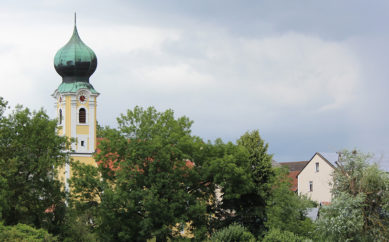

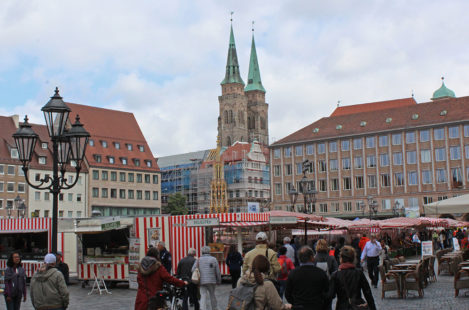

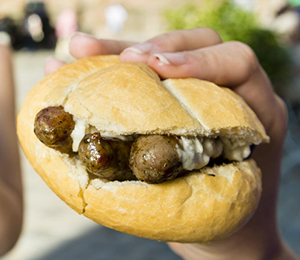


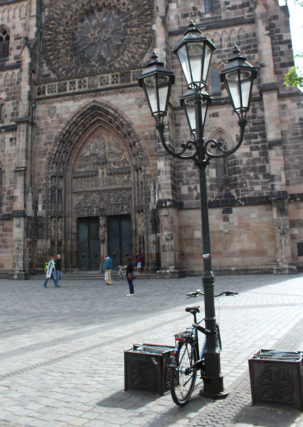
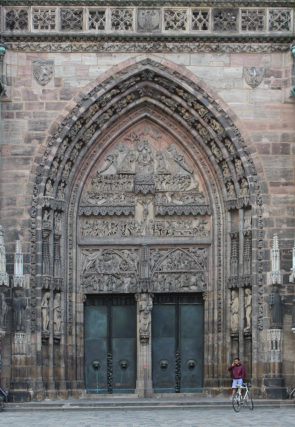

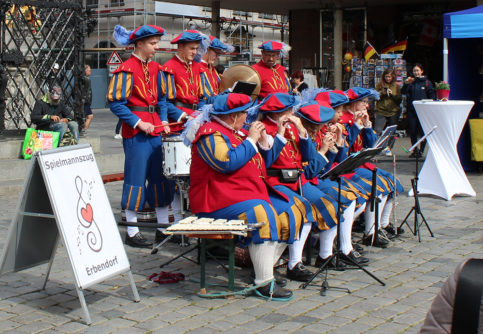
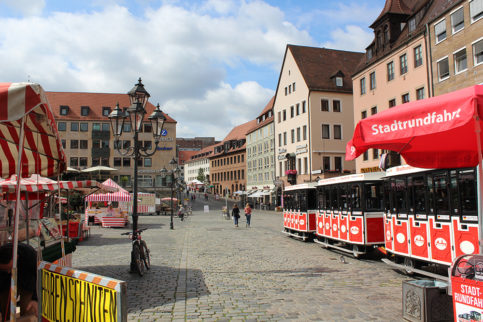
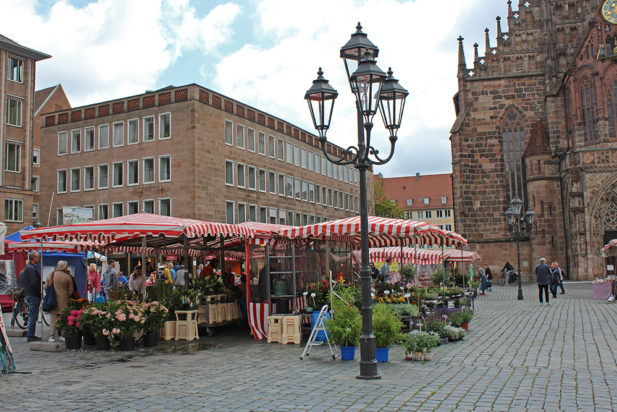
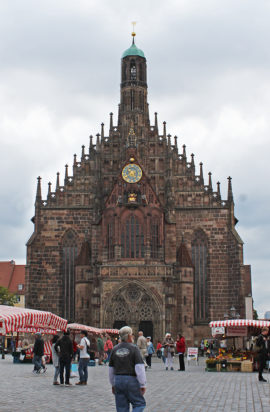

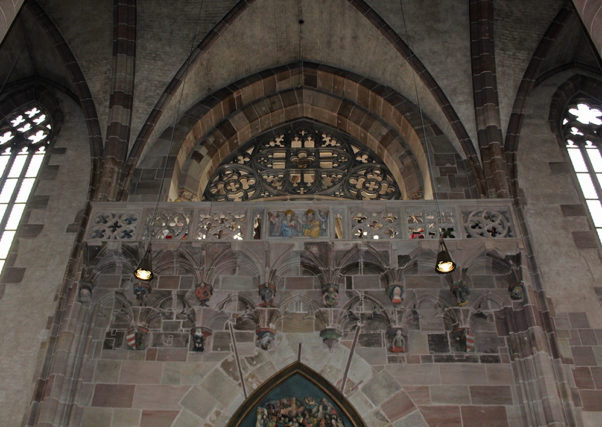
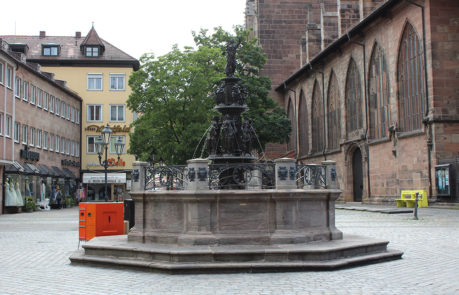
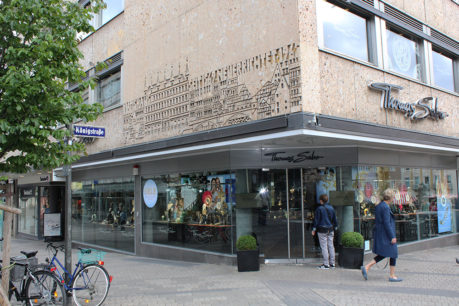

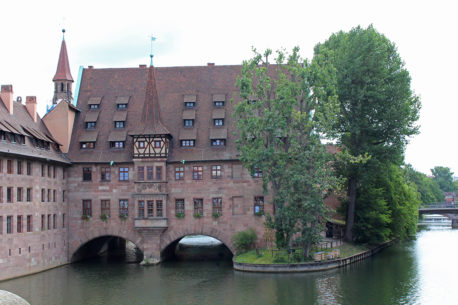
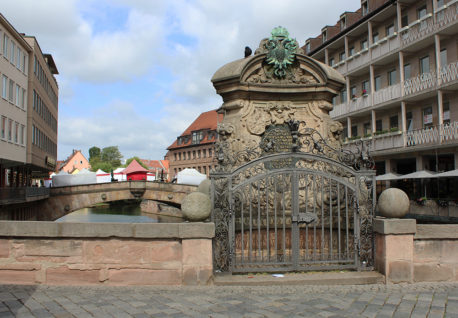
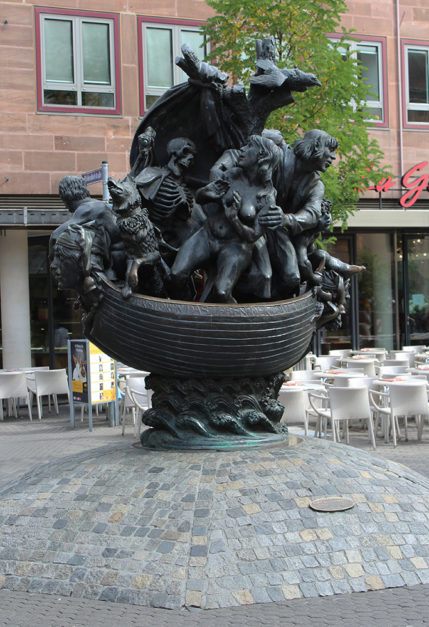
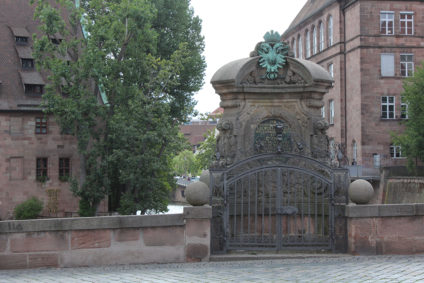
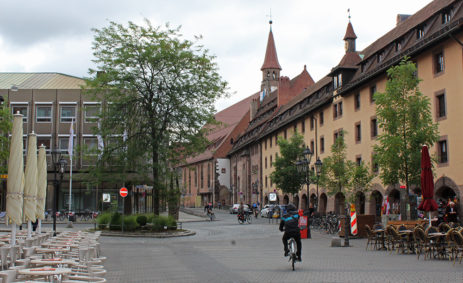

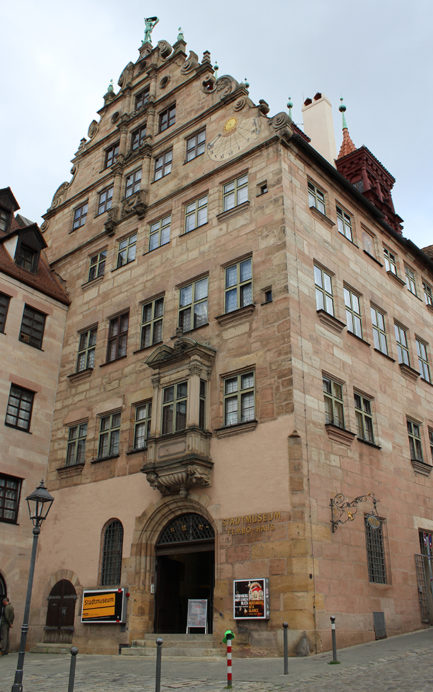
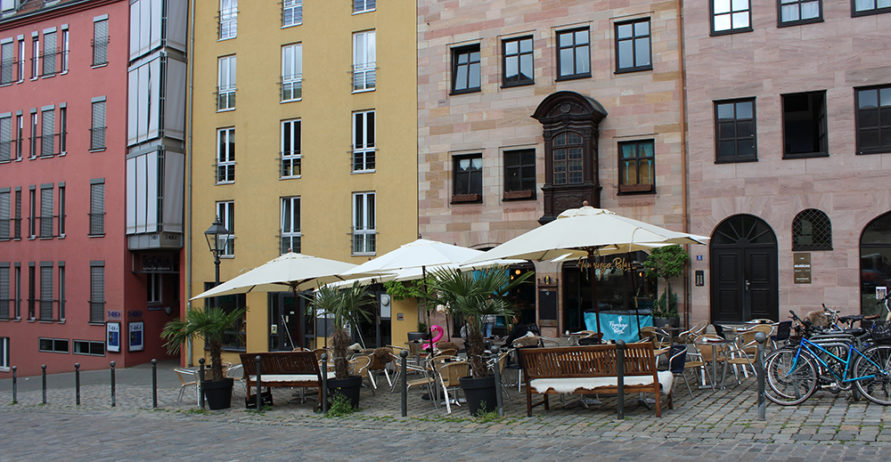
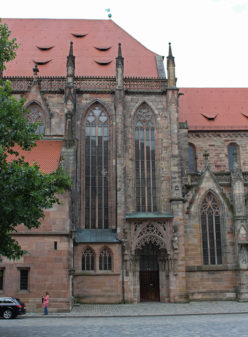
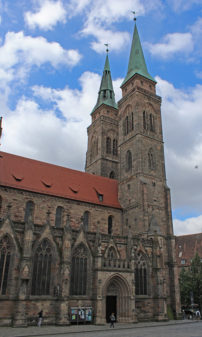


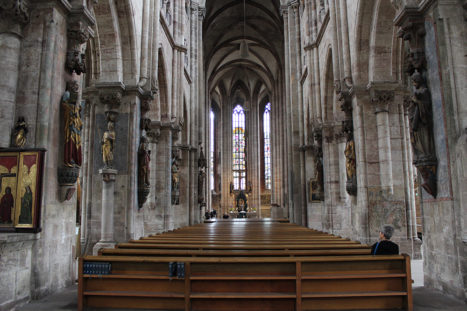

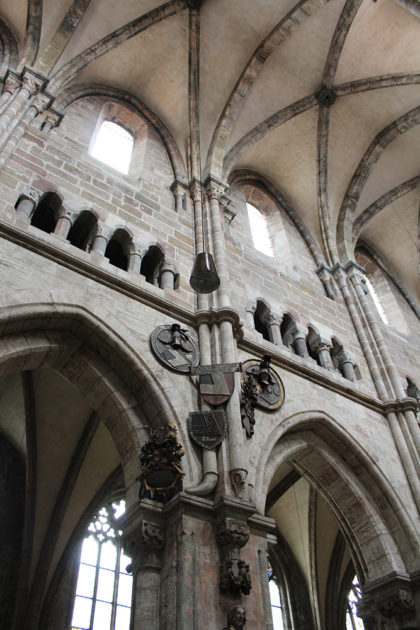
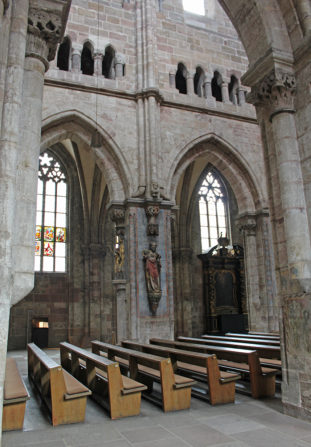


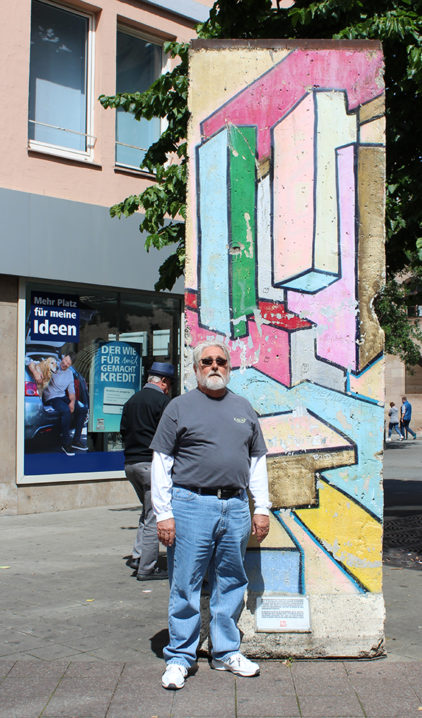


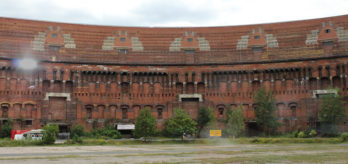
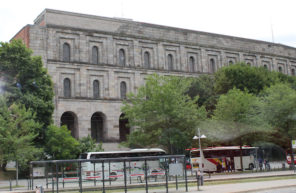
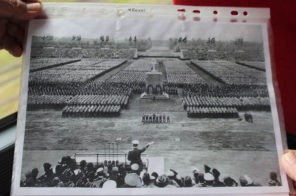
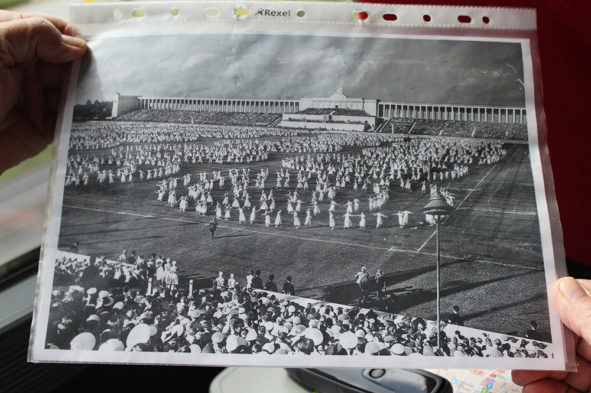
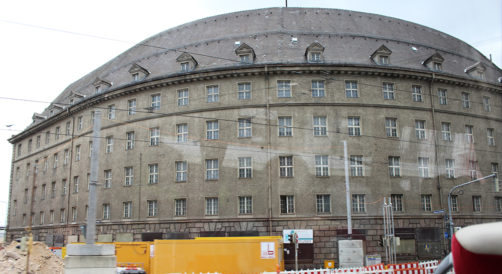
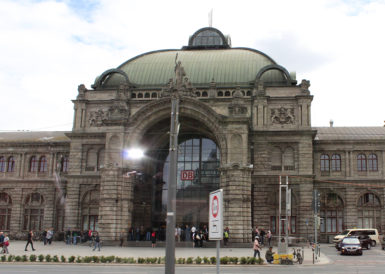
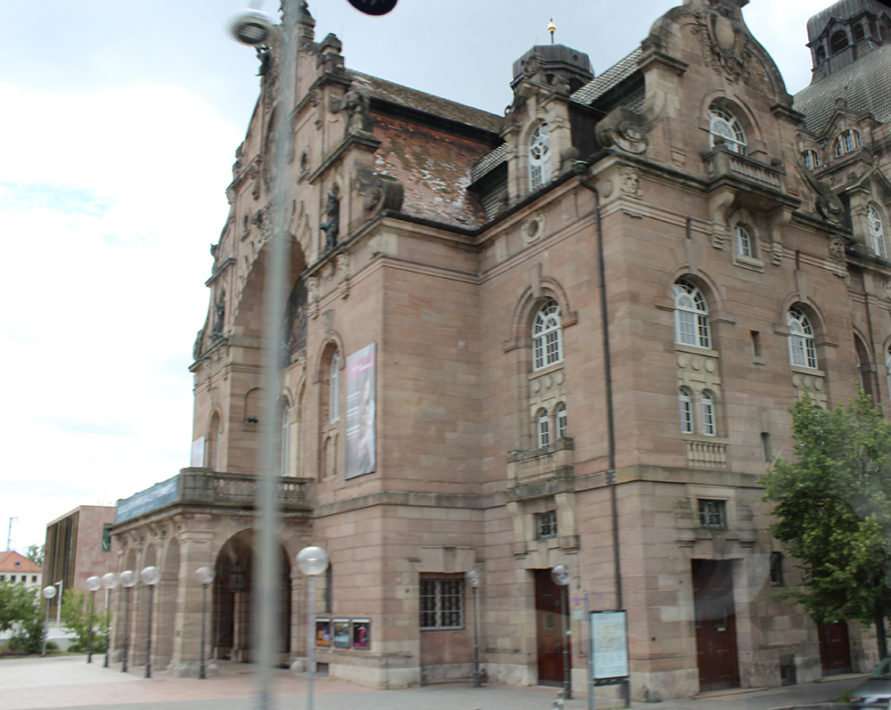
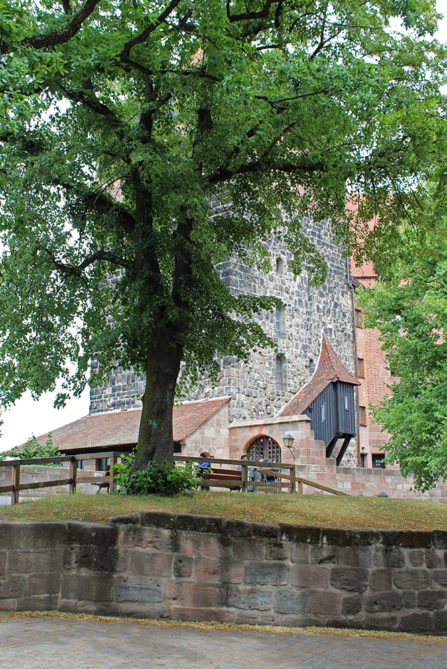



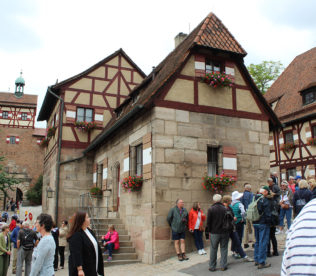
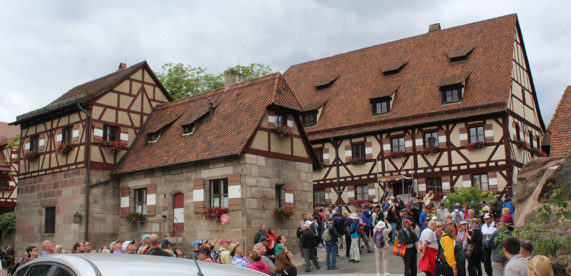



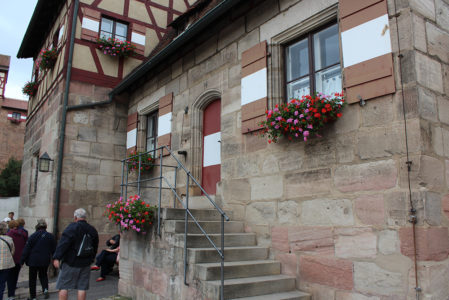
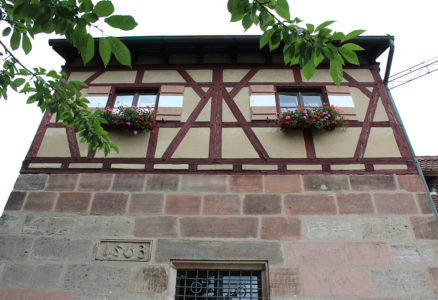
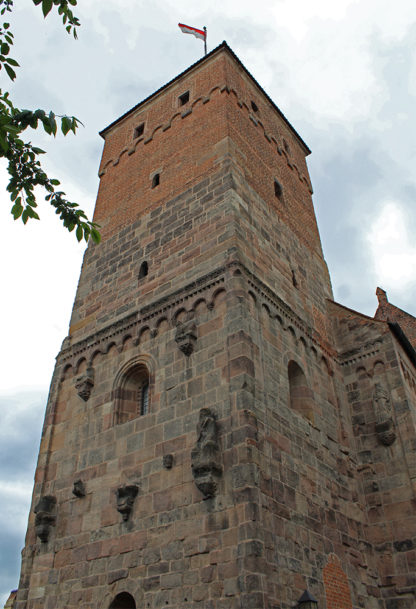
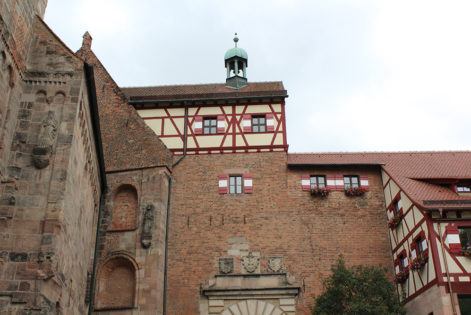
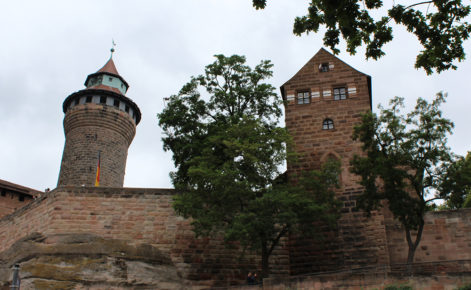

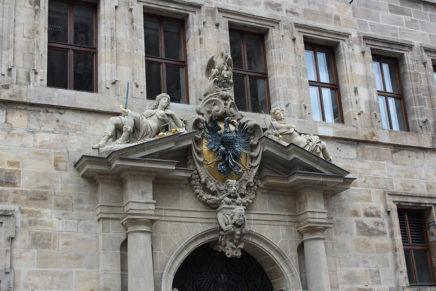
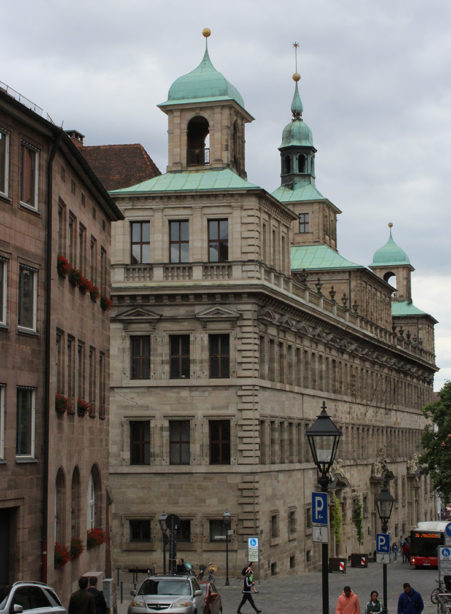


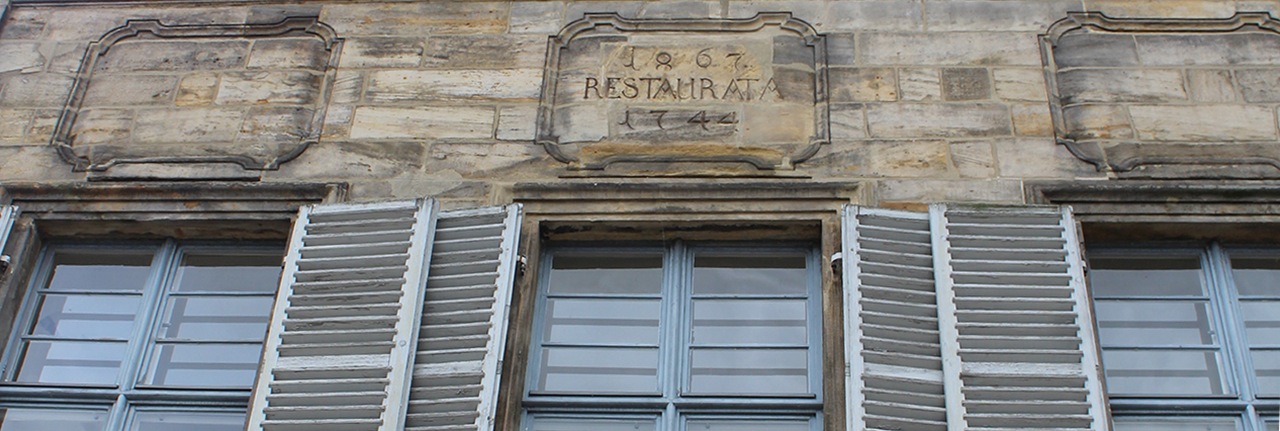



Comments are closed here.